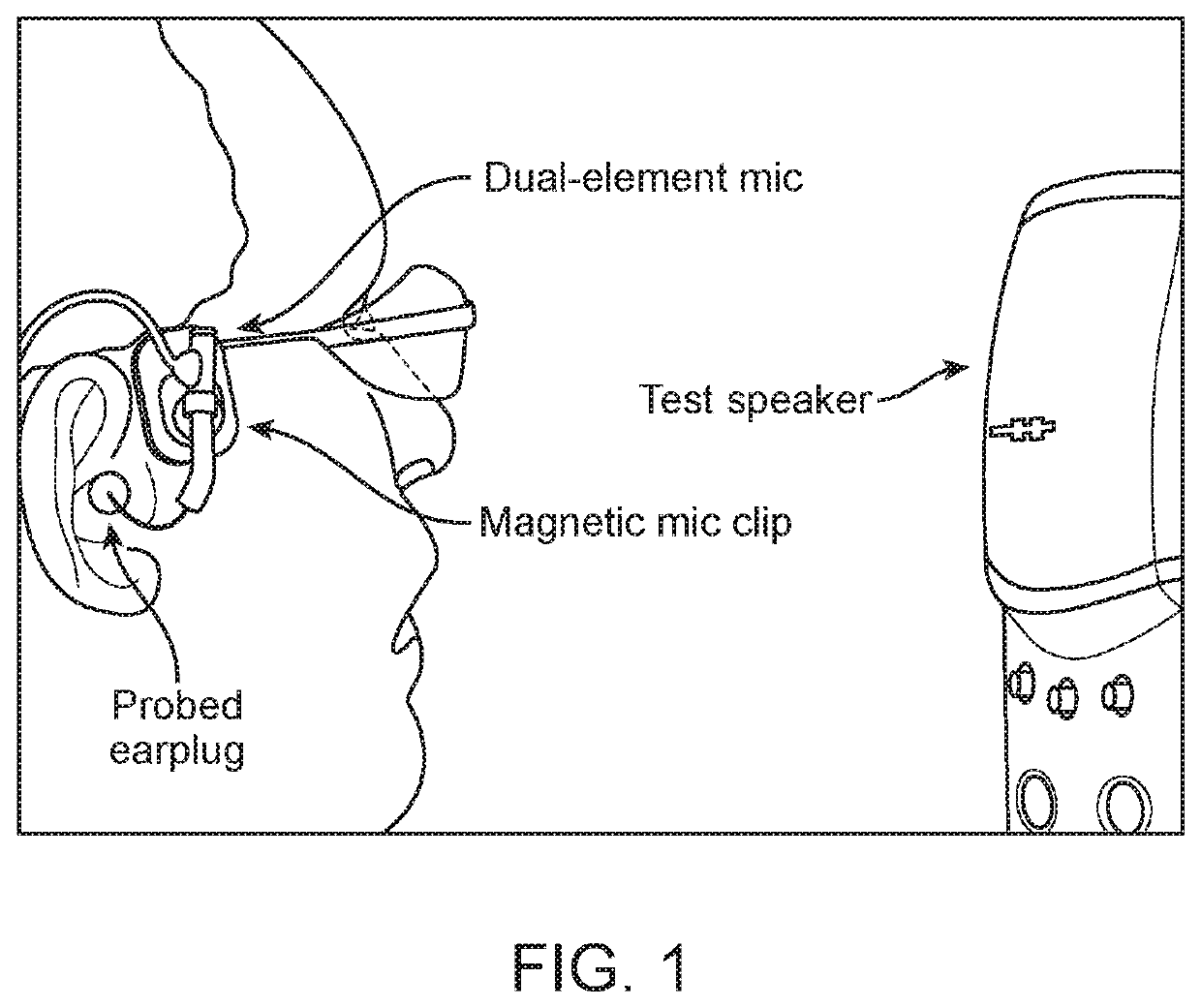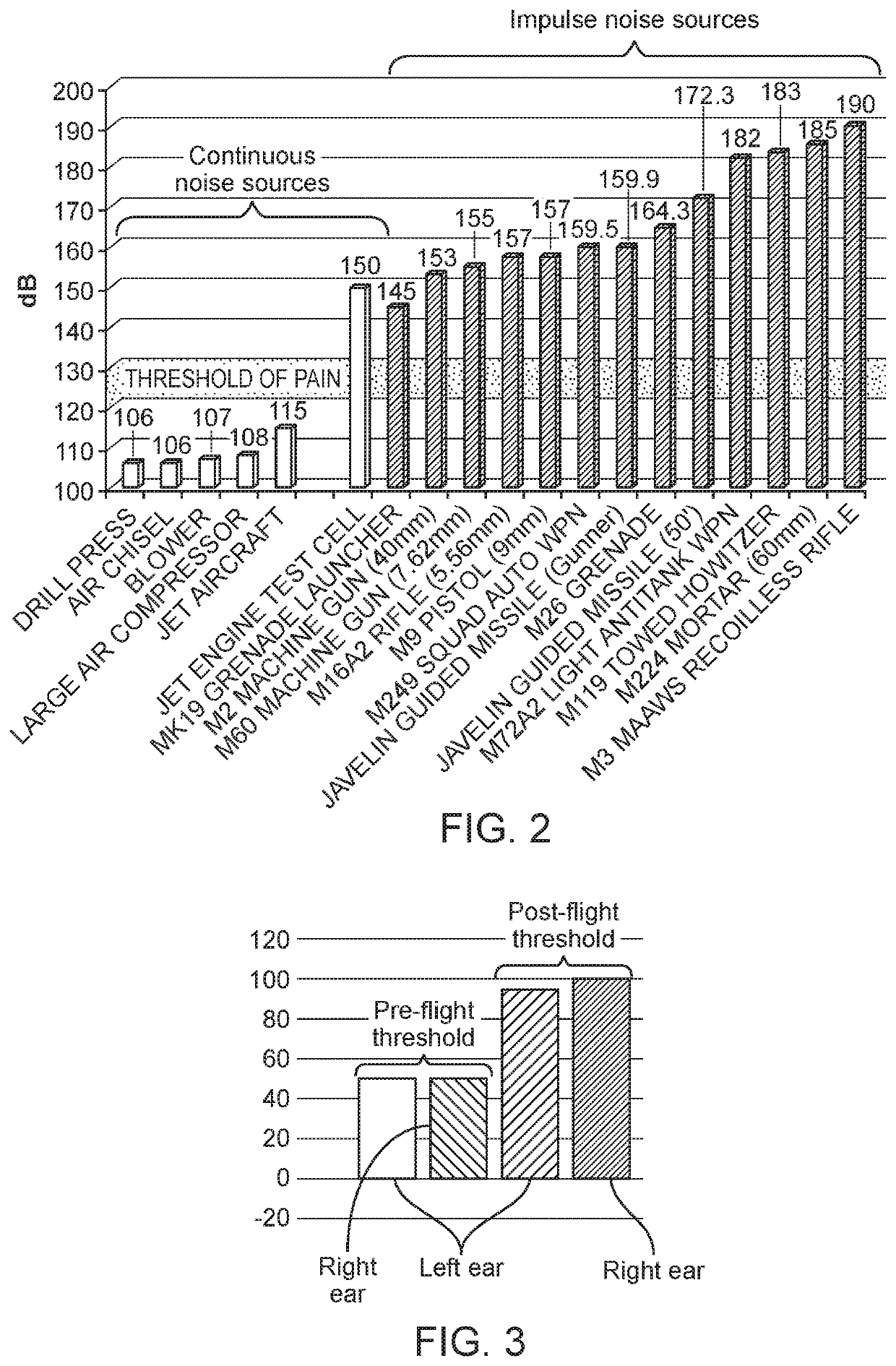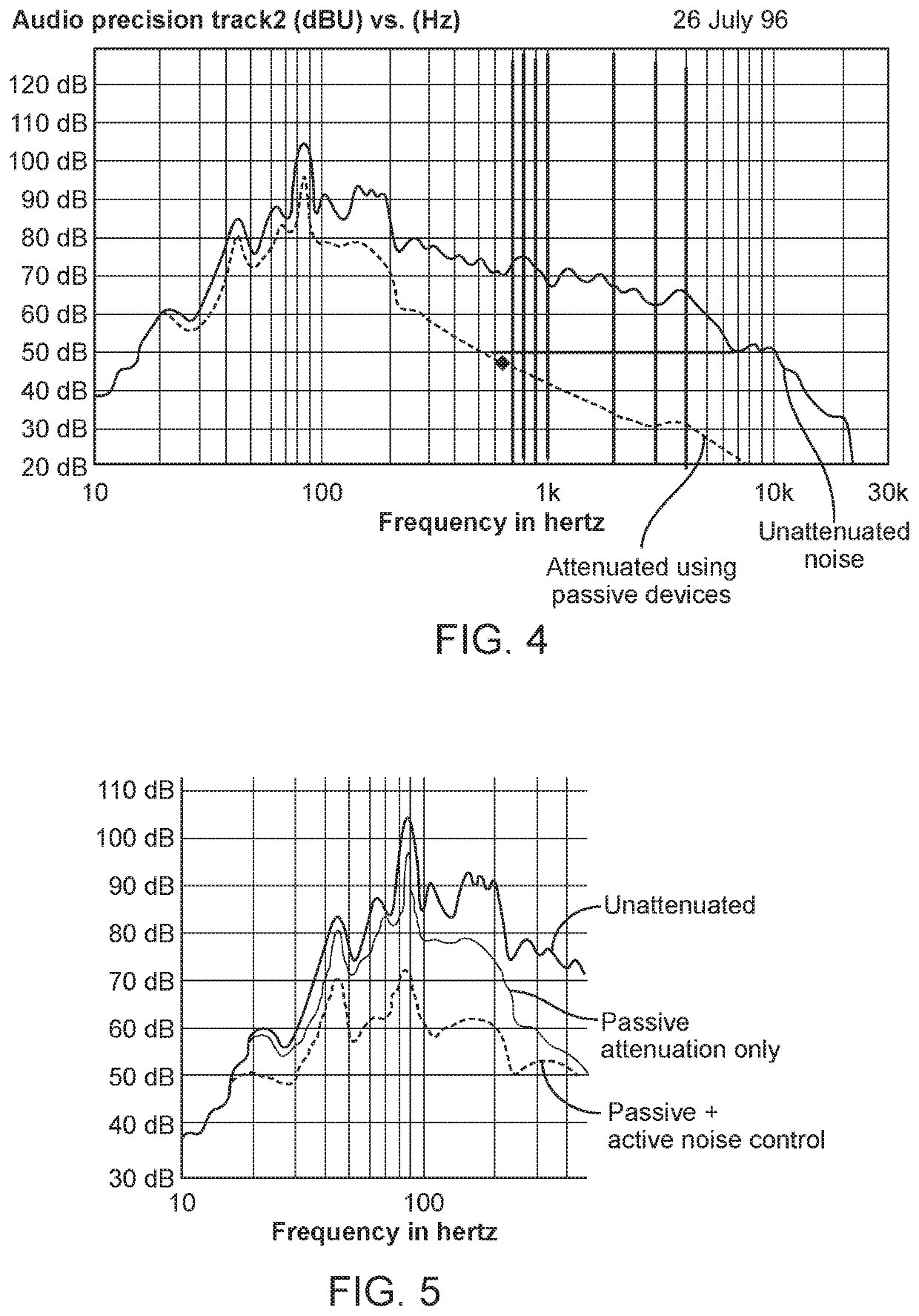Hearing protection and noise recording systems and methods
a technology of applied in the field of enhanced hearing protection and noise recording, can solve the problems of delay in cochlear degeneration, contributing to nihl and tinnitus, and neither the tcaps nor any other protective device issued by the u.s. military provide any capability to determine compliance with standard operating procedures
- Summary
- Abstract
- Description
- Claims
- Application Information
AI Technical Summary
Benefits of technology
Problems solved by technology
Method used
Image
Examples
Embodiment Construction
[0033]Particular aspects of the invention are described below in considerable detail for the purpose for illustrating its principles and operation. However, various modifications may be made, and the scope of the invention is not limited to the exemplary aspects described.
[0034]A schematic diagram of an exemplary in-ear hearing protection and recording system 600 (“HPRS”) is shown in FIG. 6A. System 600 may be controlled using controller 601. An exemplary controller 601 may comprise the Bluetooth 4.2 enabled BGM121 microcontroller manufactured by Silicon Labs. Controller 601 is preferably 6.5×6.5×1.4 mm in size and has the capability to run end-user applications on-board or alternatively used as a network co-processor over one of the host interfaces. Other controllers may comprise Arduino or STM32 microcontrollers or possibly more capable microprocessor systems with multiple cores such as a Raspberry Pi controller, and could also be utilized at the expense of power and size. Control...
PUM
 Login to View More
Login to View More Abstract
Description
Claims
Application Information
 Login to View More
Login to View More - R&D
- Intellectual Property
- Life Sciences
- Materials
- Tech Scout
- Unparalleled Data Quality
- Higher Quality Content
- 60% Fewer Hallucinations
Browse by: Latest US Patents, China's latest patents, Technical Efficacy Thesaurus, Application Domain, Technology Topic, Popular Technical Reports.
© 2025 PatSnap. All rights reserved.Legal|Privacy policy|Modern Slavery Act Transparency Statement|Sitemap|About US| Contact US: help@patsnap.com



